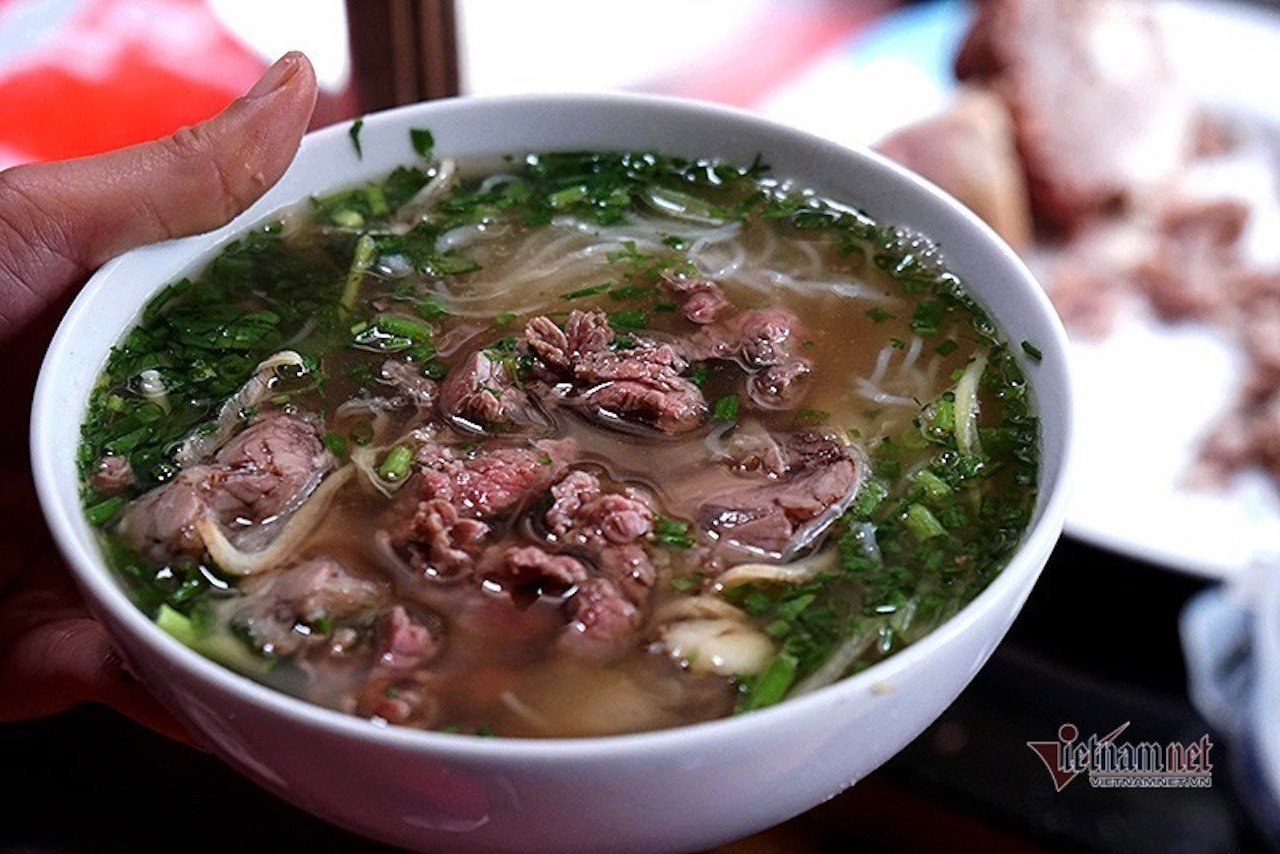
Many pho restaurants have raised prices due to tax-related cost increases. Photo: Anh Dung
In recent days, many pho and noodle shops in Hanoi have raised prices by 5,000 to 10,000 VND (around $0.20 to $0.40) per bowl, drawing mixed reactions from customers and prompting some to rethink their daily dining habits.
Nguyen Van Tuan, a regular at a street-corner pho stall in Linh Dam (Hoang Mai District), was taken aback when his usual bowl of pho jumped to 35,000 VND ($1.38). “Just breakfast alone now costs me several hundred thousand dong more per month,” he noted.
According to staff at the stall, the price hike stems from rising input costs and compliance with new tax regulations. “We now need to source ingredients from suppliers who issue proper invoices so we can declare taxes, which increases our expenses,” one worker explained.
In addition, the shop had to invest in point-of-sale systems to issue electronic invoices directly linked to the tax authority. “Add to that soaring electricity bills from running air conditioners, and rent prices that keep climbing. Without a price increase, we wouldn’t survive in this location,” the staff member said.
A representative from another pho shop confirmed they recently raised prices by 5,000 VND per bowl across their menu. “Most customers understand,” he said. “We’re trying to keep the quality consistent and looking for more affordable ingredient sources.”
One bún riêu (crab noodle soup) shop, part of a well-known Hanoi chain, also raised its prices due to newly implemented tax collection practices. Now that e-invoices are issued from tax-connected cash registers, VAT is directly included in the listed price.
“Everything from scallions and tomatoes to crab and fish sauce is taxed now. That naturally drives up bowl prices,” a shop employee explained.
While some customers sympathize, others are finding it harder to absorb the change. “When income stays the same but everything else gets more expensive, you have to rethink habits,” said Nguyen Thi Quynh, an office worker in Thanh Xuan District.
Should vendors rush to raise prices?
Raising prices is often the quickest way to maintain profit margins, especially with increasing costs and compliance demands. But business experts warn that hasty adjustments can backfire if not coupled with visible improvements in quality or service.
“Customers care about the bottom line,” said Nguyen Tuan Linh, owner of a Hanoi eatery. “If prices go up without noticeable improvements, they’ll feel cheated. We risk losing loyal patrons.”
He advised food vendors to study the impact of tax policies thoroughly and consider gradual, transparent price changes rather than abrupt hikes. “Sudden increases make customers feel like they’re being forced to shoulder someone else’s tax burden.”
Nguyen Thai Binh, co-founder of the Concepts – VCS Academy, echoed the sentiment, noting that price sensitivity is rising in a weakened consumer market. “Sudden increases could lead to lower sales, as spending is becoming more cautious,” he warned.
Instead of blanket price hikes, businesses should explore ways to optimize costs - like renegotiating with suppliers, adjusting recipes or portion sizes, and tailoring pricing by location or customer segments. “When necessary, any price change should go hand in hand with increased product value to retain customer loyalty,” Binh advised.
Duy Anh